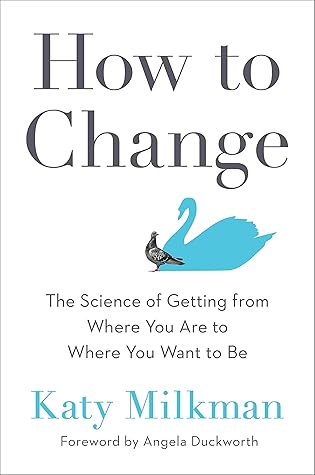More on this book
Community
Kindle Notes & Highlights
You’ll learn that making hard things seem fun is a much better strategy than making hard things seem important.
But to give yourself the best chance at success, it’s critical to size up your opponent and develop a strategy tailored to overcome the particular challenges you face. The surest path to success is not one-size-fits-all. Instead, you must match your approach to your opponent.
Behavior change is similar. You can use an all-purpose strategy that works well on average. Set tough goals and break them down into component steps. Visualize success. Work to create habits—tiny ones, atomic ones, keystone ones—following the advice laid out in self-help bestsellers. But you’ll get further faster if you customize your strategy: isolate the weakness preventing progress, and then pounce.
The idea was that by nudging people toward objectively better choices (say, by putting healthy foods at eye level in the cafeteria or by simplifying the paperwork necessary to apply for government aid), you could improve their lives at little to no cost without restricting their freedom.
When policy makers, organizations, or scientists applied a one-size-fits-all strategy to change behavior, the results were mixed. But when they began by asking what stood in the way of progress—say, why their employees weren’t saving enough money or getting flu shots—and then developed targeted strategies to change behavior, the results were far better.
if you want to change your behavior or someone else’s, you’re at a huge advantage if you begin with a blank slate—a fresh start—and no old habits working against you.
She learned that rather than perceiving time as a continuum, we tend to think about our lives in “episodes,” creating story
arcs from the notable incidents, or chapters, in our lives.
the idea that the start of a new life chapter, no matter how small, might be able to give people the impression of a clean slate.
labels matter to our behavior. When we’re labeled “voters” (instead of people who vote), “carrot eaters” (instead of people who eat carrots whenever they can), and “Shakespeare readers” (instead of people who read Shakespeare a lot), it influences how we act, not just how we describe ourselves.
“fresh start effect.”
We’re more likely to pursue change on dates that feel like new beginnings because these moments help us overcome a common obstacle to goal initiation: the sense that we’ve failed before and will, thus, fail again.
when we’re seeking to change, the disruptions to our lives triggered by physical transitions can be just as powerful as the fresh starts spurred by new beginnings on our calendars.
These findings, combined with Hengchen’s, make it clear that while fresh starts
are helpful for kick-starting change, they can also be unwelcome disruptors of well-functioning routines. Anyone seeking to maintain good habits should beware.
By reminding people of an upcoming fresh start, we were able to make the same opportunity for behavior change more appealing. These findings show that it may be possible to boost a wide range of goal-directed behaviors if we just get the timing of our invitations right—from enrolling in online classes to purchasing energy-efficient appliances to scheduling health checkups.
a creative solution to a common problem.*
Doing the “right” thing is often unsatisfying in the short-term.
Economists call this tendency to favor instantly gratifying temptations over larger long-term rewards “present bias,” though its common name is “impulsivity,” and it’s unfortunately universal.
We think “future me” will be able to make good choices, but too often “present me” succumbs to temptation.
people could tackle tough goals more effectively if they stopped overestimating their willpower. They predicted that if people focused on making long-term goal pursuit more enjoyable in the short-term by adding the proverbial lump of sugar to their medicine, they’d be far more successful.
Whenever you do something that reduces your own freedoms in the service of a greater goal, you’re using a commitment device.


